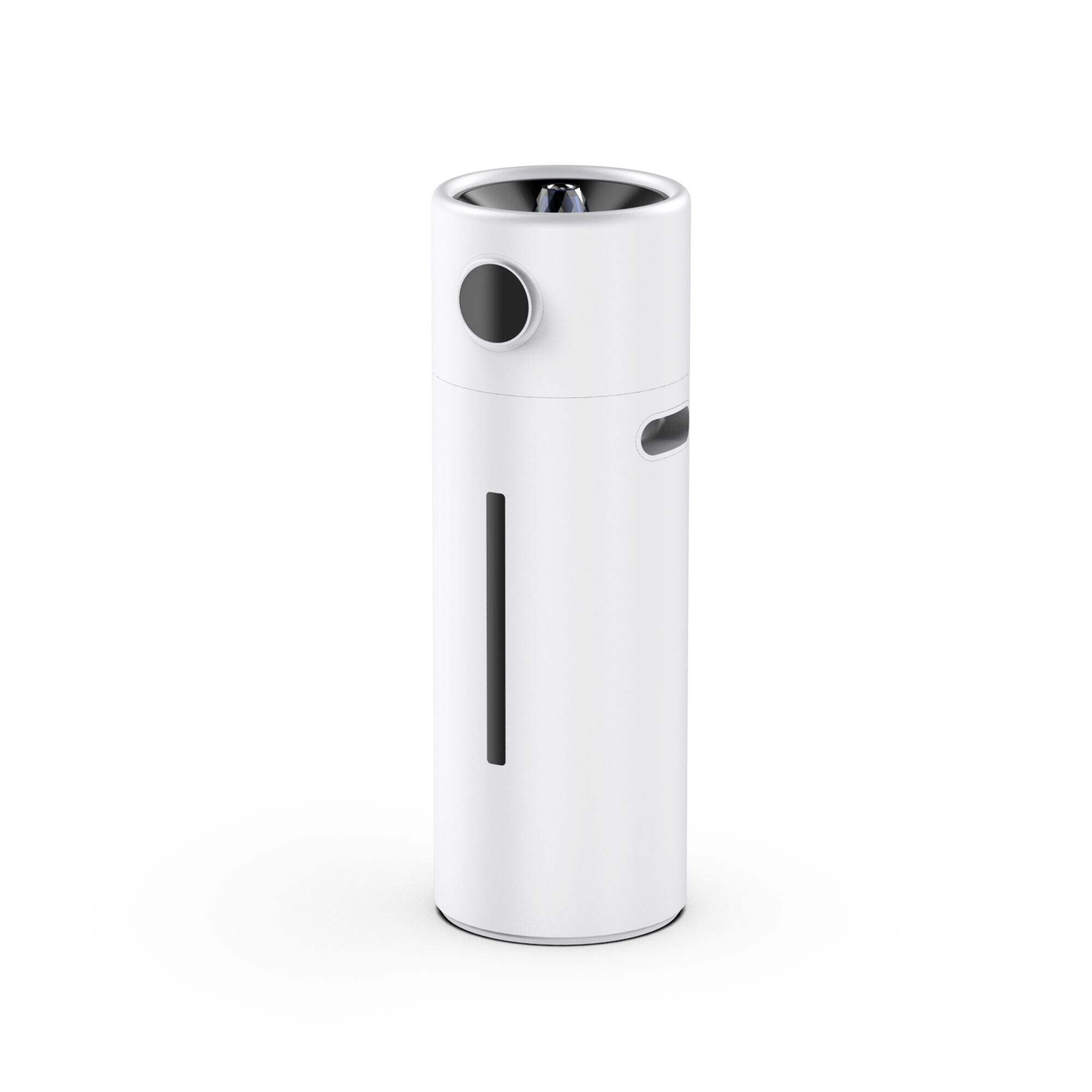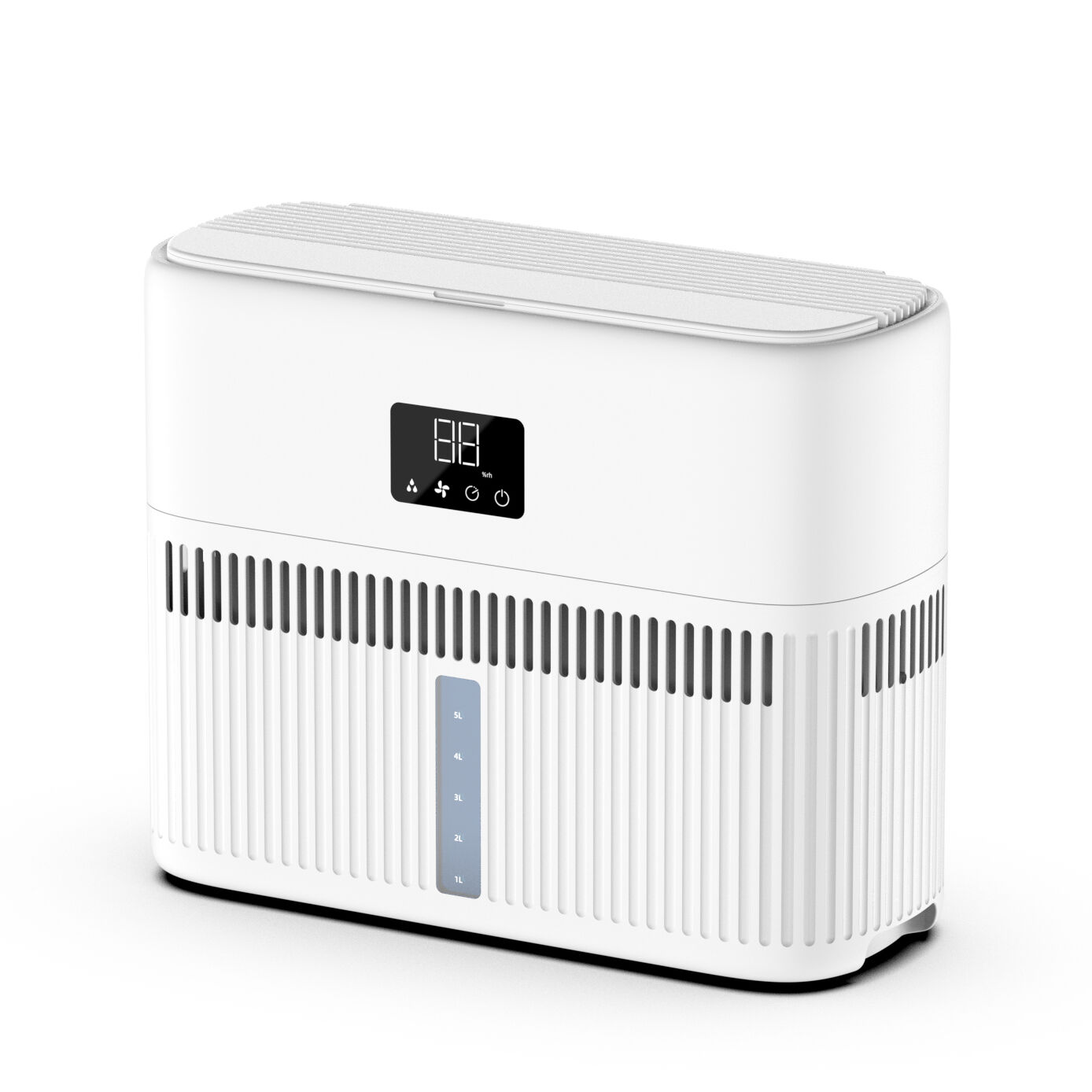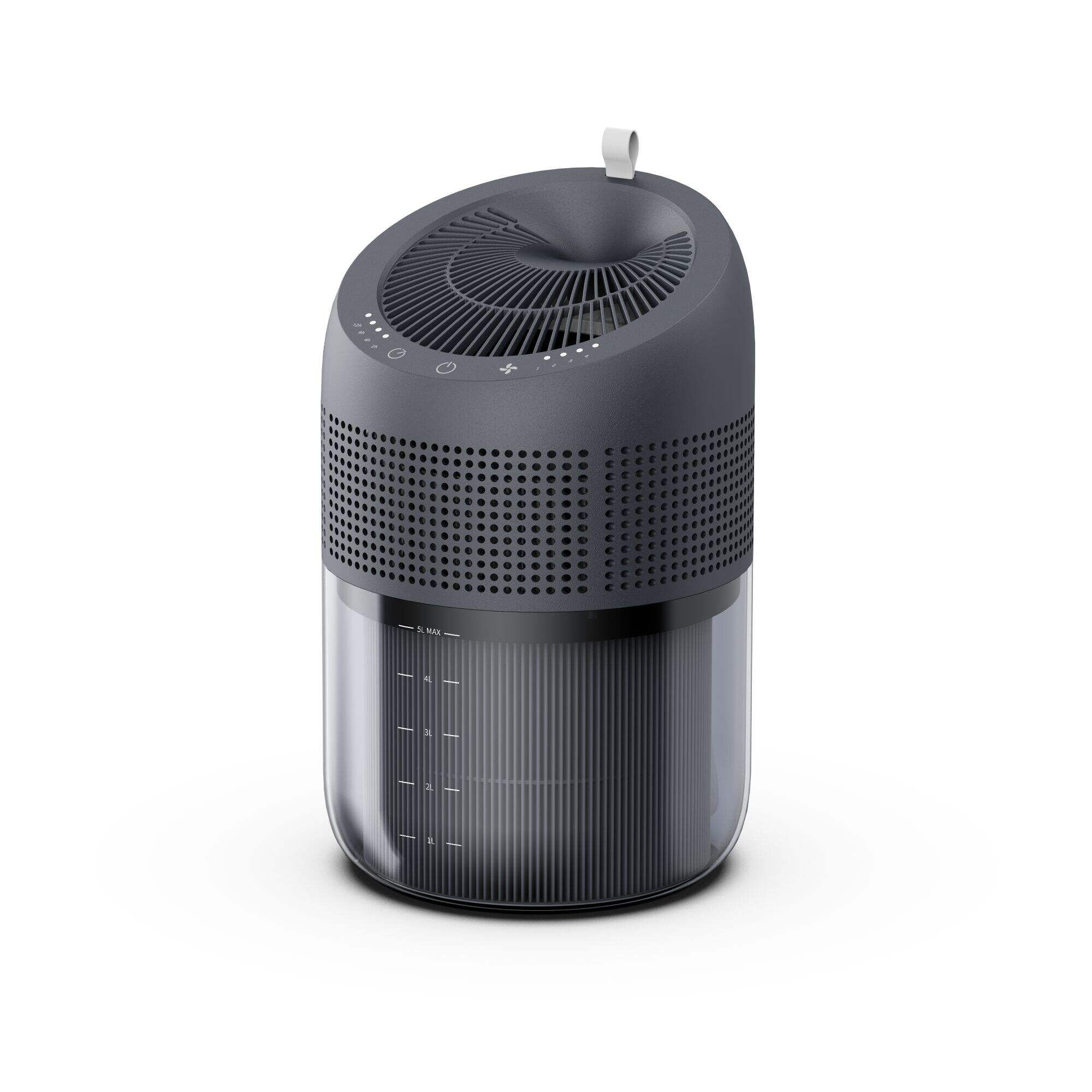Home Humidifiers: Balancing Moisture Levels for Comfortable Living Spaces
Understanding Humidity Balance in Home Environments
Ideal Indoor Humidity Levels for Health & Comfort
Ideal indoor humidity levels, generally ranging from 30% to 50%, are crucial for maintaining health and comfort in our living spaces. These levels help prevent problems such as respiratory issues, skin dryness, and even structural damage to our homes. It's fascinating to note that the Centers for Disease Control (CDC) highlights the importance of these humidity levels in reducing the risk of respiratory infections and aggravation of allergies. Scientific studies have shown that maintaining this humidity range supports skin hydration and overall well-being, making it vital to monitor and manage indoor air humidifiers.
Effects of Low Humidity on Skin and Respiratory Health
Low humidity can lead to a host of problems, notably affecting skin and respiratory health. When the air's moisture content falls, it can cause dry skin, and irritation of the respiratory passages, and worsen conditions like allergies and asthma. Statistics demonstrate that during low humidity seasons, there is an increase in colds and asthma attacks due to the drying of mucous membranes. Humidifiers play a crucial role in alleviating these issues, offering relief by adding necessary moisture back into the air, making them essential, especially for sensitive individuals.
Risks of Excessive Moisture and Mold Growth
Excess moisture in a home environment poses significant risks, including the growth of mold and its associated health impacts. Mold spores thrive in overly damp conditions, contributing to allergies and respiratory disorders. Health organizations have quantified the problem, linking indoor mold to various health issues. To combat these risks, it’s beneficial to use dehumidifiers alongside humidifiers to maintain optimal air balance. This not only enhances indoor air quality but also helps prevent problematic moisture levels that could lead to potential health hazards.
Types of Home Humidifiers Explained
Ultrasonic Humidifiers: Quiet Operation for Bedrooms
Ultrasonic humidifiers are renowned for their silent operation, making them perfect for bedrooms. They work by using high-frequency sound vibrations to turn water into a fine mist, which helps maintain the ideal humidity levels without disturbing sleep. Their quiet nature improves sleep quality, which is essential for restorative rest. Furthermore, ultrasonic models tend to be more energy-efficient compared to other types, as they do not require heating elements to produce mist. This efficiency also leads to lower maintenance needs, providing convenience for users seeking a hassle-free solution.
Evaporative Humidifiers: Natural Moisture Distribution
Evaporative humidifiers function by drawing in air and passing it through moistened filters, distributing moisture naturally throughout the room. One of their key benefits is their self-regulating ability; they only operate when the air is too dry, preventing over-humidification. This makes evaporative humidifiers a safe choice for maintaining optimal indoor humidity levels. For those unsure about selecting the best evaporative humidifier, consider factors like room size, humidity needs, and specific climate challenges to find the ideal model. Their ability to naturally adjust to the air's moisture needs helps ensure consistent comfort and health benefits.
Cool Mist vs. Warm Mist: Choosing Your Climate
Choosing between cool mist and warm mist humidifiers depends on specific climate needs and personal health concerns. Cool mist humidifiers utilize ultrasonic or evaporative technologies, providing a refreshing mist suitable for hot climates and allergenic protection. Conversely, warm mist models use a heating element to produce a warm, soothing vapor ideal for cold environments and respiratory relief. For versatile performance, consider factors like room size, seasonal changes, and individual preferences. Recommendations should account for the room's dimensions and any existing health issues such as asthma, prioritizing models best suited for addressing dry air problems.
Key Features to Consider When Selecting a Humidifier
Room Size Coverage and Tank Capacity
Choosing the right humidifier involves considering the room size and tank capacity. To determine the appropriate humidifier size, measure your room's square footage and match it with the humidifier's specifications. This ensures optimal coverage and effective humidification without underperformance. For larger or open spaces, you might prefer models with higher tank capacities, allowing longer run times without frequent refilling. Typically, a tank capacity of about 1 to 1.5 gallons can offer extended usage hours, keeping the air comfortably moist. Consider key performance indicators such as run time and water dispersion rate for a more informed decision.
Humidifiers for Dry Air Climates: Enhanced Output Needs
In dry climates, selecting a humidifier with enhanced output features is essential. These areas demand higher moisture output due to lower humidity levels and potential seasonal fluctuations. Look for models designed to provide robust humidity output to effectively maintain comfort against dry air conditions. Alternatively, evaporative humidifiers are beneficial in such climates due to their self-regulating nature—operating only when the air is too dry. User reviews often highlight models like the Levoit Dual 150, renowned for its efficient performance and adaptability to fluctuating air dryness levels, making it an exemplary choice for dry air conditions.
Safety Features for Baby and Pet-Friendly Homes
When selecting humidifiers for homes with babies and pets, safety is paramount. Key features include automatic shut-off when the water level is low, cool mist operation to prevent burns, and secure tank designs to prevent spills and leaks. These elements provide peace of mind and help prevent accidental injuries. For instance, models like the Vicks 3-in-1 SleepyTime Humidifier excel in these areas, offering safe and effective humidification. Its cool operation and secure design ensure a safe environment, allowing guardians to rest easy knowing the humidifier poses minimal risk to their little ones or furry friends.
Top-Rated Home Humidifiers for Optimal Moisture Control
Household Ultrasonic Humidifier with Large Water Tank: All-Day Operation
When it comes to managing indoor humidity efficiently, the Household Ultrasonic Humidifier with Large Water Tank stands out for its remarkable all-day operation. Equipped with an oversized water tank, this ultrasonic humidifier ensures continuous moisture delivery without frequent refills. Its user-friendly design, featuring easy refilling methods and automatic settings, adds convenience to daily operations. User testimonials often praise its quiet performance and effectiveness in maintaining optimal humidity levels, ensuring a comfortable home environment.
Smart Sensor Evaporative Humidifier: Auto-Adjusting Humidity
The Smart Sensor Evaporative Humidifier offers an advanced solution with its auto-adjusting humidity capabilities. Designed to automatically regulate moisture levels based on real-time room conditions, it ensures consistent comfort and efficient energy use. This technologically sophisticated unit not only minimizes energy consumption but also enhances user convenience. Expert reviews highlight its ability to provide hassle-free humidity control, making it a top choice for those seeking modern solutions for dry air environments.
Desktop Cool Mist Evaporative Humidifier: Compact Space-Saving Design
Ideal for smaller spaces, the Desktop Cool Mist Evaporative Humidifier combines compactness with effective moisture control. Its sleek design makes it perfect for desk setups or cramped areas where space is at a premium. Despite its small size, users appreciate its ability to maintain a comfortable humidity level without compromising on performance or affordability. Reviews often highlight its practicality in office environments, demonstrating its capability to enhance air quality in confined spaces efficiently.
Maintenance Tips for Prolonging Humidifier Efficiency
Daily Cleaning Routines to Prevent Mineral Buildup
Engaging in a consistent daily cleaning routine is essential for preventing mineral buildup in humidifiers. Mineral deposits can significantly impact the performance and air quality provided by your device if not managed properly. Here are some simple tasks that should be part of your daily cleaning routine:
- Empty the water tank entirely after each use to prevent the growth of bacteria and algae.
- Rinse the tank and other removable components with clean water to wash away any residues.
- Wipe damp surfaces with a dry cloth to minimize the potential for lingering moisture, which can harbor microorganisms.
Neglecting these maintenance steps can lead to a decrease in your humidifier's efficiency and risk introducing harmful mold or bacteria into the air, which may particularly affect those with respiratory issues.
Filter Replacement Schedules for Evaporative Models
Filter replacement is a critical aspect of maintaining evaporative humidifiers, ensuring they work efficiently. A proper schedule aids in both the unit's longevity and prevents contamination of the airflow. Depending on water quality and usage frequency, filters should generally be replaced every one to three months. If you notice discolored filters or an odor, it's indicative of a sooner change.
Consistently maintaining an appropriate filter replacement schedule can enhance the humidifier's efficiency. Clean filters ensure optimal vaporization rates, support healthy air quality in your home, and reduce the wear on the motor and other internal mechanisms of the device.
Winterization and Seasonal Storage Best Practices
Proper winterization and seasonal storage are crucial for extending the lifespan of your humidifier. This preventive care involves several key steps:
- Thoroughly clean and dry the entire humidifier, including the tank and base, to prevent mold growth during storage.
- Remove and dispose of used filters, particularly if they are at the end of their lifespan.
- Store the device in a dry, cool place to avoid damage from environmental conditions.
These practices not only protect your humidifier but are also cost-effective as they help avoid unnecessary repairs or replacements. Many users have found that taking the time to properly winterize their humidifiers ensures seamless operation when they are needed again. By following these steps, you can keep your appliance working efficiently for many seasons to come.

 EN
EN
 AR
AR
 NL
NL
 FR
FR
 DE
DE
 EL
EL
 HI
HI
 IT
IT
 JA
JA
 KO
KO
 PL
PL
 PT
PT
 ES
ES
 ID
ID
 VI
VI
 TH
TH
 TR
TR
 MS
MS



